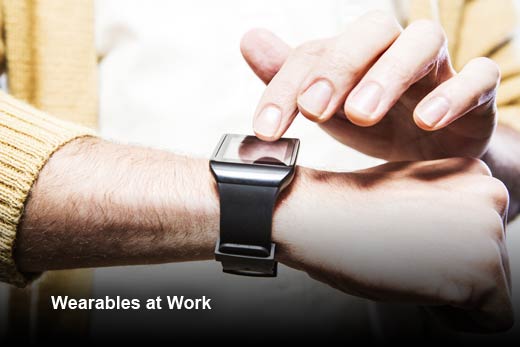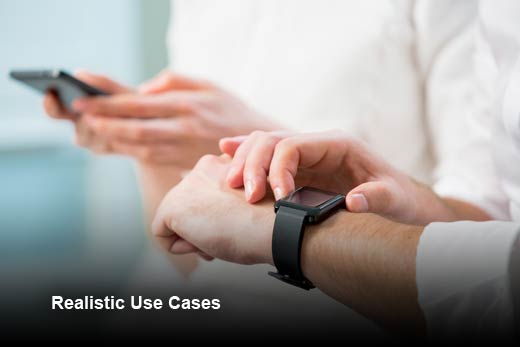With the steady increase of wearables being used within the workplace, organizations need to understand how these devices will fit in as a part of wider corporate and mobile strategies, BYOD policies, and how they can be most effectively utilized to increase productivity.
While there are clear benefits to introducing wearables into enterprise functions – such as in training/on-boarding procedures or implementing health care rewards plans – wearables can also come with issues concerning employee privacy and maintaining company data security.
In this slideshow, MOBI, a leading provider of enterprise mobility services, provides five tips to help companies successfully incorporate wearables into the workplace.
Wearables at Work
Click through for five tips organizations can use to successfully incorporate wearables into the workplace, as identified by MOBI.
Realistic Use Cases
Tip 1: Be realistic about the use case of wearables within the enterprise.
When considering implementing wearables into workplace functions and activities, companies should first take a realistic look at who will need these devices to contribute more to the organization, and how they will be used. For example, wearables can be used in human resources as part of employee on-boarding, helping provide real-time feedback, and in procedural updates. And items like smartwatches or FitBits can be utilized to create health care benefit programs. When these use cases are identified and vetted, companies can then start looking into what departments will have access and those that may not require wearables to be successful.
Company Policies
Tip 2: Implement company policies from day one, and promote them internally.
Once a company has identified how wearables can be used within the enterprise, it must then outline the policies and regulations (if needed) surrounding their use to ensure company data and content remains protected. Examining mobility policies like BYOD and COPE are vital, as these will help determine what devices are used, who has access to data, and what can be shared. After a policy or policies are put into place, companies then need to promote them internally to all employees to ensure everyone is on the same page.
Data Boundaries
Tip 3: Establish boundaries with the data collected through wearable technology.
In addition to helping increase work productivity, wearables can offer a plethora of data that companies may not have had access to before. It is important to establish boundaries on what data will be collected from wearable devices, and to also make sure employees are made aware of this before they are given access. Companies need to walk a fine line when considering employee privacy and using data to assist with things such as managing insurance premiums or monitoring employee time.
Data Management
Tip 4: Learn what data is important, and what can be left behind.
As previously noted, wearables can offer companies more access to data than ever before. But not all of this data will be helpful for the enterprise. Companies should work with and train IT managers to learn what content is important to monitor and store, and what can be discarded. This will not only help put the data to meaningful use, but also avoid massive digital stockpiles of useless information.
Data Security
Tip 5: Have a security plan in place before a disaster occurs.
With Big Data comes big responsibility. While wearables can be extremely helpful in providing employees more access to important company data or files, they also offer another portal to hackers or for data loss. Companies should establish security procedures specific to wearables before they are distributed or open to employees to help ensure vital company data remains secure, or at least backed up, should a disaster strike.








